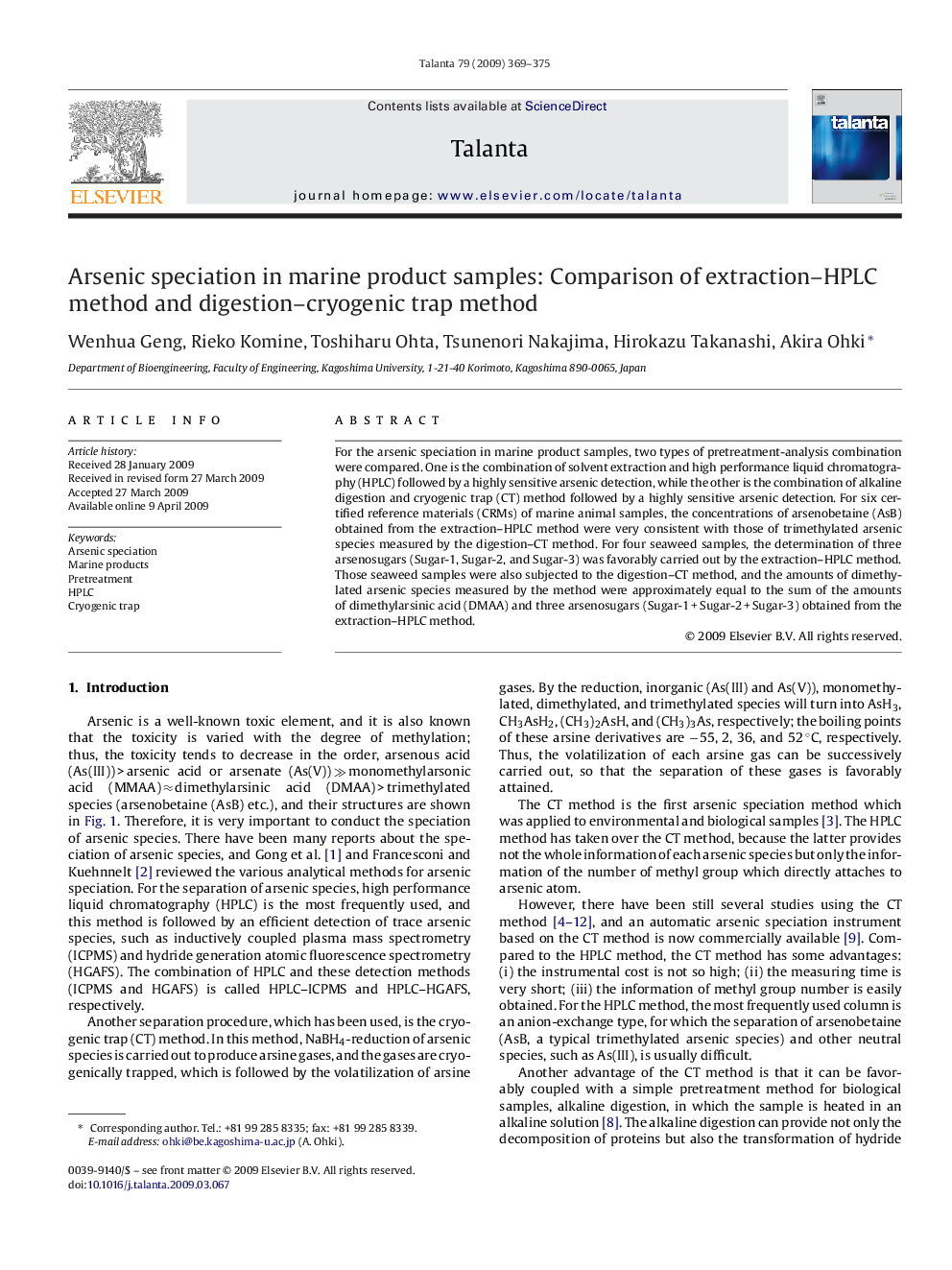| Article ID | Journal | Published Year | Pages | File Type |
|---|---|---|---|---|
| 1244815 | Talanta | 2009 | 7 Pages |
For the arsenic speciation in marine product samples, two types of pretreatment-analysis combination were compared. One is the combination of solvent extraction and high performance liquid chromatography (HPLC) followed by a highly sensitive arsenic detection, while the other is the combination of alkaline digestion and cryogenic trap (CT) method followed by a highly sensitive arsenic detection. For six certified reference materials (CRMs) of marine animal samples, the concentrations of arsenobetaine (AsB) obtained from the extraction–HPLC method were very consistent with those of trimethylated arsenic species measured by the digestion–CT method. For four seaweed samples, the determination of three arsenosugars (Sugar-1, Sugar-2, and Sugar-3) was favorably carried out by the extraction–HPLC method. Those seaweed samples were also subjected to the digestion–CT method, and the amounts of dimethylated arsenic species measured by the method were approximately equal to the sum of the amounts of dimethylarsinic acid (DMAA) and three arsenosugars (Sugar-1 + Sugar-2 + Sugar-3) obtained from the extraction–HPLC method.
